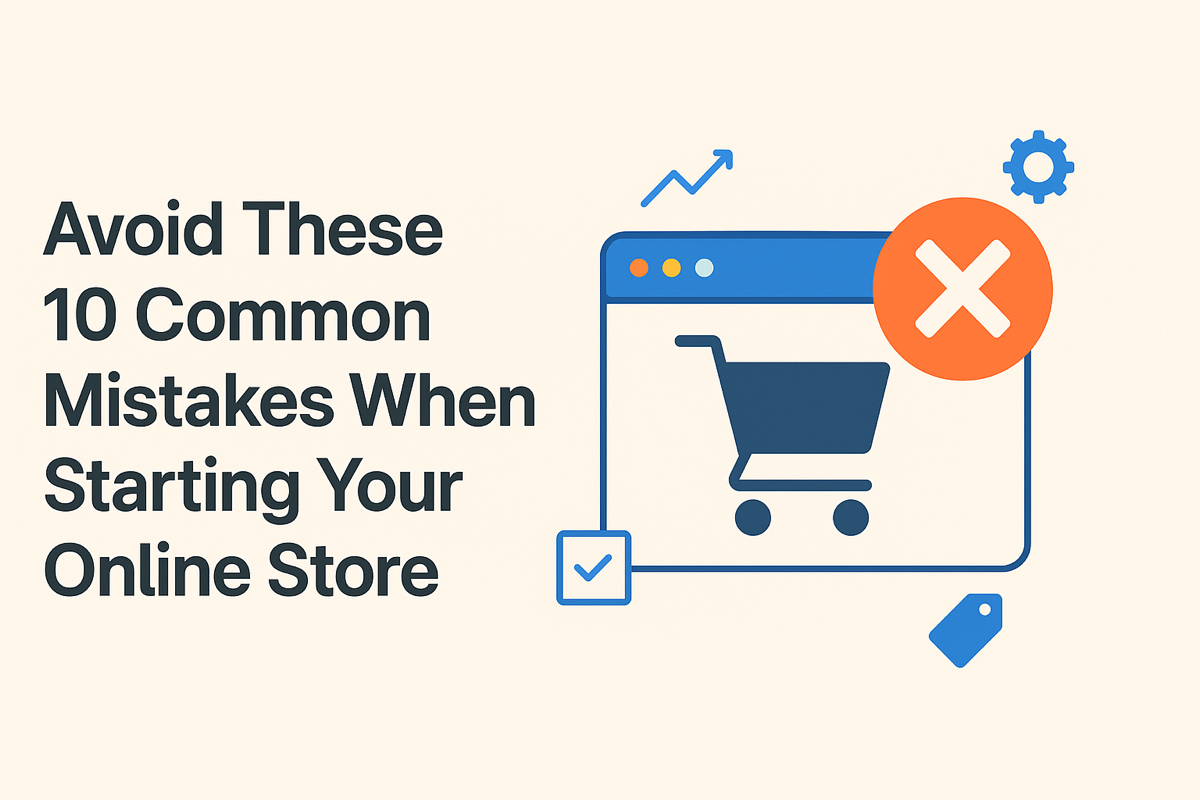
Avoid These 10 Common Mistakes When Starting an Online Store
Avoid These 10 Common Mistakes When Starting Your Online Store
Launching your own online store is exciting—but it also comes with potential pitfalls that can cost you time, money, and customers. Whether you’re selling custom products, dropshipping, or managing inventory yourself, there are common mistakes that new eCommerce entrepreneurs make. The good news? You can avoid them with a bit of planning.
In this guide, we’ll break down the top 10 mistakes to avoid when starting an online store—and how to set your business up for long-term success.
1. Not Defining a Clear Niche
Too many new store owners try to be everything to everyone. But without a clearly defined niche, it’s almost impossible to stand out.
- What to do instead: Focus on a specific audience or product category. Whether it’s custom phone cases, eco-friendly apparel, or personalized gifts, narrowing your focus helps build brand recognition.
- SEO Tip: Target long-tail keywords that reflect your niche, such as “custom silicone phone case for iPhone 15” instead of just “phone case.”
2. Choosing the Wrong E-commerce Platform
Your platform is the foundation of your store. Picking the wrong one can limit your growth or cost you more in the long run.
- Common mistake: Choosing a platform based on price alone.
- Better approach: Compare platforms like Shopify, WooCommerce, and BigCommerce based on scalability, integrations, and ease of customization.
3. Ignoring Mobile Optimization
Over 70% of online shopping happens on mobile devices. If your store isn’t mobile-friendly, you’re losing sales.
- Make sure your store:
- Loads quickly on smartphones
- Uses responsive design
- Has mobile-friendly checkout
- SEO Tip: Use Google’s Mobile-Friendly Test to identify issues.
4. Poor Product Photos or Mockups
High-quality visuals are crucial for online shopping. Low-resolution or inconsistent product images can ruin trust.
- What to do instead: Use studio-style mockups for consistency. Tools like Customify make it easy to show real-time product previews.
- Pro Tip: Use a square format and white background for product photos—it looks clean and works well on marketplaces and social media.
5. Underestimating the Power of Product Descriptions
Great product descriptions don’t just inform—they sell.
- Common mistake: Using manufacturer copy or generic text.
- Fix it by:
- Highlighting benefits, not just features
- Answering common customer questions
- Using keywords naturally
6. Skipping Market Research
Don’t just assume people will buy what you’re selling. You need proof that there’s demand—and that you can compete.
- Validate your product by:
- Checking Google Trends and search volume
- Analyzing competitors
- Running small ad tests
7. No Clear Shipping or Return Policy
Shipping delays or unclear return terms can lead to bad reviews and chargebacks.
- To avoid this:
- Offer transparent shipping times at checkout
- List return/exchange policies in your footer and FAQ
- Use email updates to keep customers in the loop
- SEO Tip: Include a dedicated “Shipping & Returns” page for trust and keyword opportunities.
8. Not Collecting Emails Early
Your email list is one of your most valuable assets. If you don’t start collecting emails on day one, you’re missing future revenue.
- How to start:
- Add a pop-up or embedded form offering a discount or freebie
- Use a tool like Klaviyo or Mailchimp to automate your welcome series
- Segment your list for personalized offers later on
9. Weak Branding and Design
Your store design should reflect your brand’s personality. A sloppy logo or clashing colors turn shoppers away.
- What to do instead:
- Use a clean, modern theme
- Invest in a logo or use a professional template
- Stick to a consistent brand color palette and typography
- Pro Tip: Tools like Canva or Looka make it easy for non-designers to create polished branding.
10. Launching Without a Marketing Plan
“If you build it, they will come” doesn’t apply to online stores. You need a launch strategy and ongoing traffic sources.
- Include in your plan:
- SEO-optimized product pages
- Social media posts and paid ads
- Influencer outreach or affiliate marketing
- Content Tip: Start a blog to drive organic traffic. Custom product stores can write about design tips, gift ideas, or customer stories.
Final Thoughts: Learn Before You Launch
Building a successful online store takes more than just adding products to a site. By avoiding these 10 common mistakes—from poor planning to weak branding—you’ll be miles ahead of the competition.
Take the time to do it right, and you’ll not only launch a store—you’ll build a brand that lasts.
Need help creating real-time product previews or building a smooth customization experience for your store? Customify can help you do just that.